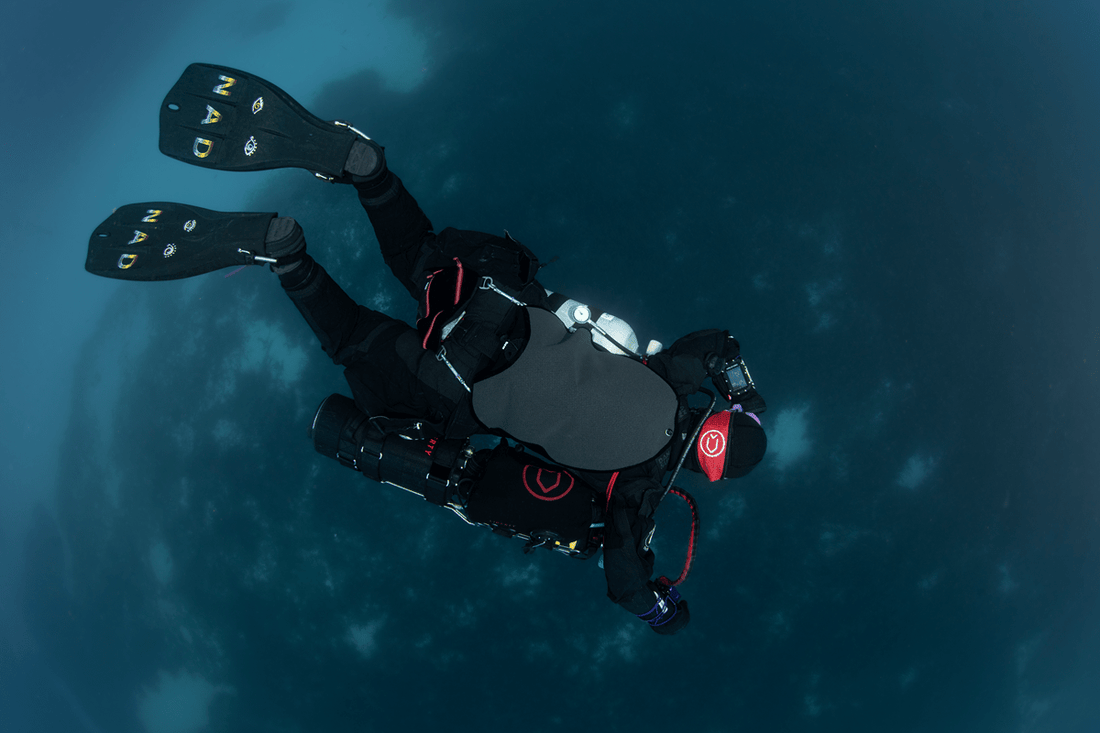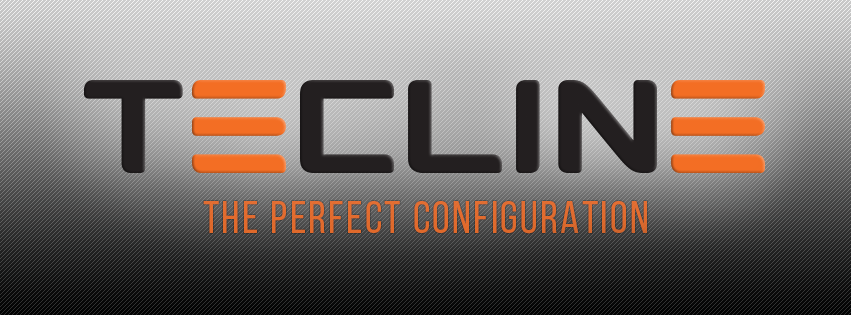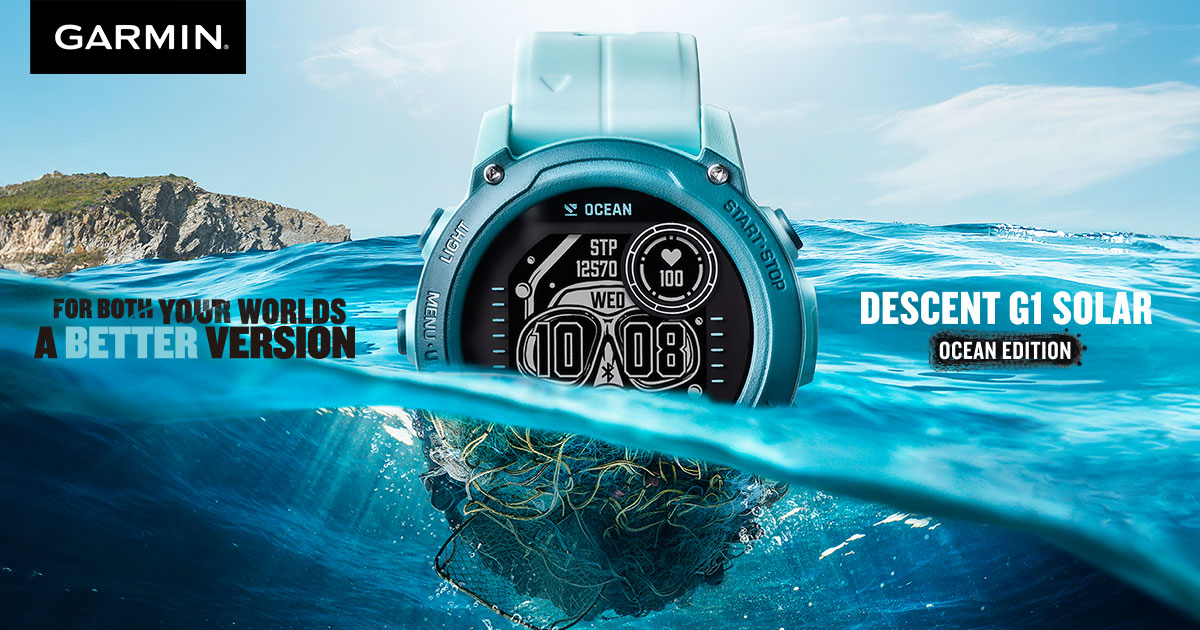
Selecting and Configuring a Sidemount System: Harness, Wing, and Setup Explained
Sidemount diving has become increasingly popular among technical and recreational divers alike. Originally developed for cave diving, the sidemount configuration offers greater streamlining, flexibility, and redundancy compared to traditional backmount systems. A properly chosen and configured sidemount BC (buoyancy compensator) enhances trim, reduces drag, and allows easier access to equipment during the dive.

Image by: @kira.rnr
Diver: @nan-goes-diving
Whether you are planning for tropical dives, cold water diving or even diving in an overhead environment. Selecting the right sidemount BC and configuring it correctly is essential for safety, comfort, and performance.
Things to consider when choosing your Sidemount BC
When evaluating a sidemount BC, divers should look closely at several technical criteria.
Harness Adjustability & Modularity
The sidemount harness is the foundation of a sidemount system. A fully adjustable and modular harness allows you to fine-tune fit and function for your body type, environment and diving style. Look for systems that let you:
1. Adjust shoulder, waist, and crotch strap lengths independently.
2. Replace or upgrade hardware such as D-rings, sliders, and clips.
3. Choose between minimalist continuous webbing harnesses or independently adjustable harness for ease of adjustability and comfort.
Image by Dan Sun Titanium

Lift Capacity Of The Wing
The wing provides buoyancy and must match your diving environment:
Aluminum cylinders:
A smaller wing with 25-30 Lbs lift keeps the system streamlined while providing ample lift for 2 aluminum tanks. This is suited for tropical diving with a thin wetsuit. Sometimes a more petite or petite statures may also opt for a wing with a smaller lift as it fits their body better.
Steel cylinders:
A larger wing with 35–40 Lbs lift offers the additional buoyancy needed for additional weight of the steel tanks as well as additional weights needed for cold water diving due to a thicker wetsuit or thicker undergarment used underneath a drysuit.
Attachment Points & D-Rings
Cylinder and accessory attachment points determine how stable and streamlined your configuration will be. Key considerations include:
Fixed vs. sliding D-Rings for adjusting the trim of cylinders


Image by Dan Sun Titanium
Stowing and storage solutions for accessories like reels, or backup lights.

 Image by Dan Sun Titanium
Image by Dan Sun Titanium
Robust, corrosion-resistant materials such as stainless steel or titanium.


Image by Dan Sun Titanium
Quick Release Buckles Vs Classic Belt Buckles
Attaching a low profile quick release style buckle compared to a standard belt buckle is a upgrade that is sometimes preferred by divers diving in overhead environments like wrecks or caves where the traditional belt buckles poses a snagging hazard due to its bulkier profile. This kind of quick release buckles features a 2 piece design with no moving parts making it very reliable due to its simple mechanism on top of its extremely low profile. Some divers still prefer the classic belt buckle due to its tried and tested design while offering a buckle that is very easy to adjust and adapt for thicker exposures.

Image by Dan Sun Titanium
Image by Dan Sun Titanium
Weight System
Weight placement is critical to achieving good trim underwater. Weight systems includes:
Spine weight pockets, which is good for holding a large amount of weights for a more balanced overall weighting as well as holding weights on a particular part of your back.
Trim Weight Pockets are compact in size and is allows you have weights on a small particular part of your harness, They serve the same purpose as the quick release weight plates but they are more permanent solution compared to the quick release weight plates.
Image by Dan Sun Titanium

Bungee weight plates or modular weight attachment, helps divers to attach the weight on the harness exactly where it is needed. for example the crotch strap.

Image by Dan Sun Titanium
Materials & Durability
If you are planning to get into technical diving, please note that this kind of diving can be especially demanding on equipment, therefore when choosing a sidemount BC, consider the following points:
1. Wings with outer shells that made from fabrics such as ballistic nylon (kevlar) or super fabric.
2. Hardware made of materials that hold up well in marine environment especially saltwater environment. This is when materials like titanium is preferred due to its resilience in salt water environment.
3. Having systems that comes with components that can be easily replaced by the end user is something that we cannot stress enough here. Components like Power inflators, inner bladders, harness parts, webbings all contribute to allowing you to enjoying your dives for the many years to come.
Now we are going to talk about points of consideration to adjust and setup your harness.
Harness Fitting
Adjust shoulder and waist straps so the harness is snug but not restrictive.
The crotch strap should hold the system low and stable, preventing the wing from riding up.
Wing Positioning
Center the wing behind your torso. Ensure the bottom of the wing sits low enough to provide lift near the hips, this balances the natural buoyancy shift from cylinders especially in the beginning of the dives where the cylinders are negatively buoyant.
Weight Placement
Position integrated or trim weights close to your body’s center of gravity. Avoid stacking too much weight in a single location, which can lead to poor trim.
Bungees for Cylinder Attachment
Bungees should hold cylinders tight against the torso. the bungees that holds your tank should be 6mm in diameter to 8mm depending on the material of the cylinders. Adjust length and tension so tanks remain parallel to your body, even as they empty. A good accessory to have is the loop bungee plate which holds the loop bungee on your shoulder strap.

Image by Dan Sun Titanium
Inflator And Corrugated Hose Routing
Typically the corrugated hose of the bc will go accoss from the left side of the bc, across the chest and to the right shoulder d ring on the diver.

Image by Dan Sun Titanium
We have also included a comparison of 2 of the most popular side mount harness on the market as well as the Dan Sun Titanium Agent BC.
Choosing the right Sidemount BC
Dan Sun Titanium AGENT vs. XDEEP Stealth 2.0 TEC vs. Razor 4 Side Mount System
Feature / Criteria |
Dan Sun Titanium AGENT |
XDEEP Stealth 2.0 TEC |
Razor 4 Side Mount System |
|---|---|---|---|
Harness Adjustability & Modularity |
Modular titanium parts harness, adjustable straps and customized titanium parts |
Independently adjustable sidemount harness, highly adjustable and customizable |
Continuous Webbing harness with Delta shoulder plate, multiple attachment points, with continuous bungee system |
Wing Lift Capacity |
~35 Lbs (15.9 kg) – for steel tanks, drysuits |
42 lb (~19 kg) – for heavy tech loads |
Redundant bladder BAT wing with integrated weight base~35 Lbs lift |
Attachment Points & D-Rings |
Custom Titanium hardware; versatile mounting options |
Adjustable D-rings, central dump valve, highly customizable |
Stainless steel hardware, expandable pouch, double enders |
Weight System |
Quick-release bungee weight plate plate system, Spine and trim weight pocket available separately |
Modular weight system (central spinal weight system included. Trim weight pocket can be added in. |
Pocket weight system supports up to 12 kg; pockets along waist/lumbar/wing |
Materials & Durability |
Super-Fabric™ wing; corrosion-resistant titanium hardware |
Cordura 1100d, welded seams, TPU bladder |
Flexible but durable webbing; stainless steel parts; robust, field-tested design |
Streamlining & Profile |
Wing with wrap around bladder reinforced with super fabric. |
Slim, wraparound streamlined wing |
"Second skin" fit—thin profile, loop bungee wing attachments. |
System Weight |
~2.15 kg (4.74 Lbs) |
~2.8 kg complete system |
~3.6 kg (complete system) |

























